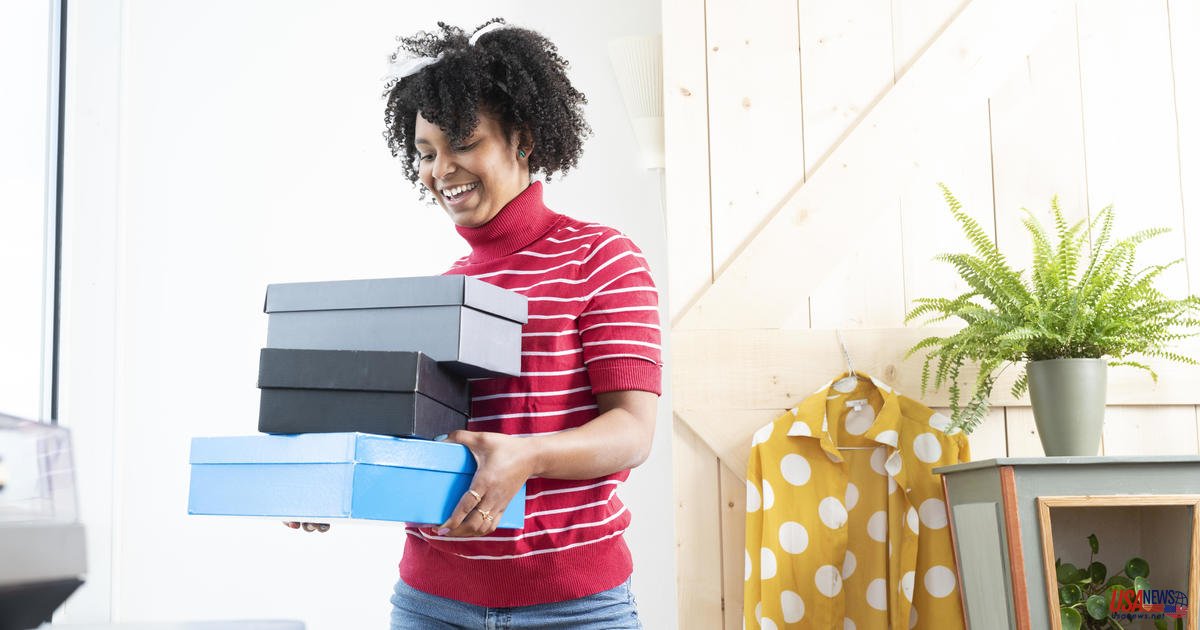Selling used clothing online has become more popular with the rise of resale platforms like Poshmark and Depop. Many people have made clothing resale a side hustle, earning thousands of followers and dozens of sales each week.
According to Mercari's 2021 study and GlobalData's 2021 report, the secondhand clothing market will more than triple by 2030. This is due to fashion lovers cleaning out their closets and combing through thrift shops to find great pieces to resell.
Before you dive into your closet, here are some things to keep in mind.
Resale apps allow you to decide the price for your items, unlike online consignment shops. To determine the value of an article of clothing before listing it, you should search similar items on multiple platforms. Also, note that brand and condition will impact the price.
Poshmark and Depop allow you to communicate with potential buyers and negotiate sales prices. You can also discount items in your inventory with their tools.
Andres Castillo, a Los Angeles-based seller of rare designer pieces via Depop, eBay, and Instagram under the brand Debonair Vintage, said that sales can be "sporadic". It can be difficult to find a buyer for rare or valuable items. They will need to appreciate the item and be willing to pay what you ask for in order to make a profit.
Eve Perez, a full time student in Lebanon, Pennsylvania who sells under the pseudonym Fitsfinesse, was featured in Teen Vogue 2021 for her success with Depop. She answers buyers' messages daily, takes photos of the products, sews custom pieces and packages orders.
It is important to communicate clearly with first-time buyers.
Reselling online takes more time than consigning your clothes, even though you can set the prices. Depop says sellers who list 15 or more items per week are more likely to generate sales.
Castillo said, "It takes a lot more time and dedication." To be a top-notch seller, they must learn how to take great photos, understand shipping rates and negotiate over text messages. They also need to research brands and trends in order to maximize their inventory.
It is important to consider overhead costs when setting prices. Commission fees are charged by online resale platforms. These fees include shipping costs and processing fees such as PayPal. Depop takes 10% of each sale, while eBay takes 15%. Poshmark charges $2.95 per item under $15 and takes 20% on items over $15. PayPal integrates with Depop and Poshmark, and charges 3.49% plus 49c per transaction for payment processing.
You are also responsible for purchasing packaging materials, printing labels, and creating space to store inventory. This may require bins or hangers. High-performing sellers recommend personal touches to their shipments such as stickers, small accessories, or a thank-you note. These costs are why it might be a good idea to not sell lower-value items, even if they won't break even.
Reusing shipping boxes and mailers can help cut costs. You can also print labels at your FedEx or UPS location instead of buying a label printer. You can also reduce shipping costs by bundling multiple items in one shipment. This will encourage buyers to buy more from your shop.
Strong personal brands are what make online resellers the most successful. To be a long-term success with a resale site, it is important to find your niche and build a loyal following.
Perez said, "It's kind of Instagram for selling." She focuses on creating a consistent aesthetic and marketing her shop via social media platforms such as TikTok.
Castillo's business grew by catering to a specific market: vintage Chanel and Moschino collectors. Castillo sells on several platforms. He also uses his Instagram account for renting pieces to stylists to use in photo shoots or red-carpet events.
Castillo said, "Lean into what you like." Even if your products don't come with a curated selection, personal packaging and a unique background photo can make them stand out.
Castillo and Perez stress the importance of linking social media platforms in order to reach as many customers as possible. You can drive customers to your shop by creating an Instagram account dedicated for your business and following other online designers and sellers. To increase your visibility, check popular social media pages to find the most trending hashtags. You can turn your unworn clothes into meaningful income by taking the time to market your brand via social media.













